07.05.2020
Spinning the Present
Visual arts
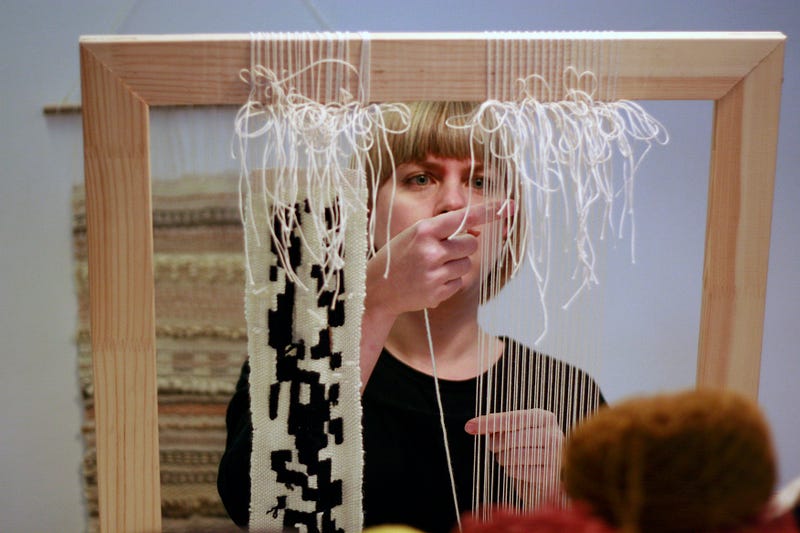
One of the first films made in the Balkans — if not the very first — in 1905 by the cinema pioneers known as the Manaki brothers records the spinning of wool in the village of Avdella, in Grevena. Trying out the new technology that they have just brought from London, they document a few seconds of a far older technique practiced by a group of women. Yet the coexistence of these two machines, the camera and the spinning wheel, is bound by a strange complicity, a shared choreography. This very first record of an otherwise everyday activity — which the Manaki brothers, as men, would remain forever observers of — seems to obey the rhythm of weaving, participating in it indirectly, and vice versa. Film and wool are both rendered recording tools, intertwined with two different epochs: the first consumed with the faithful rendering of reality, and the second, through its materiality, a symbolic representation of the customs and conditions of a certain culture.
In 2013, in the context of the exhibition Anew — A Generation of Greek Artists [Εκ νέου — Μια γενιά Ελλήνων καλλιτεχνών] (curators: Daphne Vitali, Daphne Dragona, Tina Pandi) at the Athens Conservatoire, the former location of the National Museum of Contemporary Art, the artwork Oiko-nomic Threads by Maria Varela, Afroditi Psarra and Marinos Koutsomichalis was presented. A custom-made weaving system with a DIY feel — an outdated household loom connected to two computer screens — was activated by the artists over the course of the exhibition. Linked with labor statistics from the Greek Employment Organization (ΟΑΕD) shown on the first screen, an algorithm converted the sums disbursed to the unemployed during the period 2008–2013 into a sequence of shapes inspired by patterns originating from Greek folk tradition that appeared on the second screen. The artwork developed continually according to the algorithm, in an interdependent relationship between the weaving machine and computer, but also artist — for it was only in the artist’s presence that the weaving machine could function and convert the digital shapes into woven thread. The coexistence of traditional patterns, open data, and the artists’ performative act — an act that raised questions about their status and identity as laborers — pointed out this socially and economically difficult condition through a symbolic prism. Reference to unemployment figures in an exhibition held during the economic crisis, one which sought to showcase a new generation of artists (born in the 1980s, between 1979 and 1990), was no coincidence.
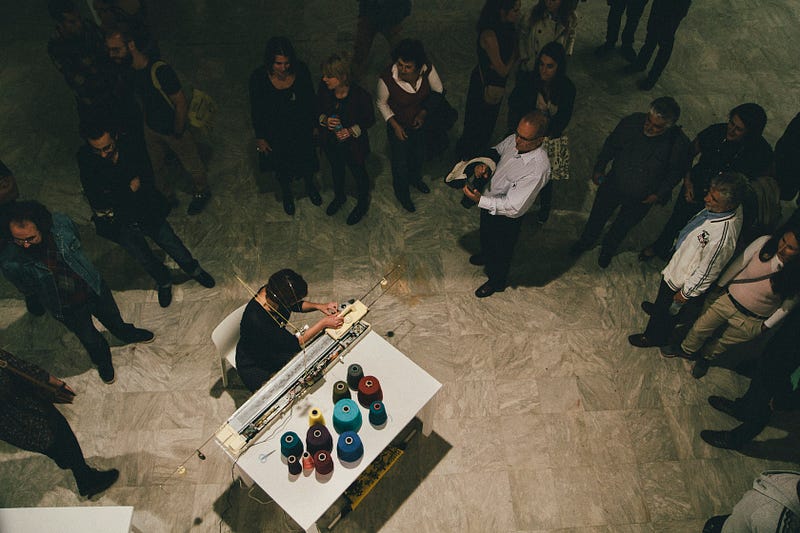
According to this above protocol created by the artists, the woven fabrics resulting from Oiko-nomic Threads constitute a kind of visual representation of Greece’s domestic economic policies at the time. Without being aware of this protocol, it is almost impossible to make sense of them, or to come to some conclusion about the economy. How are they to be understood today? Can a social condition be symbolically depicted? And how can its shape become a means of understanding it? On both an individual and collaborative level, Maria Varela’s work is fundamentally concerned with an attempt to define a visual language that, in incorporating technologies from different historical periods, is capable of depicting current societal and artistic conditions. The participation of Oiko-nomic Threads in international exhibitions (No Country for Young Men, Bozar, Brussels, curator Katerina Gregos, 2014 and the 19th Contemporary Art Festival Sesc_Videobrasil, São Paulo, curator Solange Farkas, 2015) despite its focus on Greek circumstances demonstrates its resonance but also its wide accessibility. In the end, can the artwork itself constitute a language?
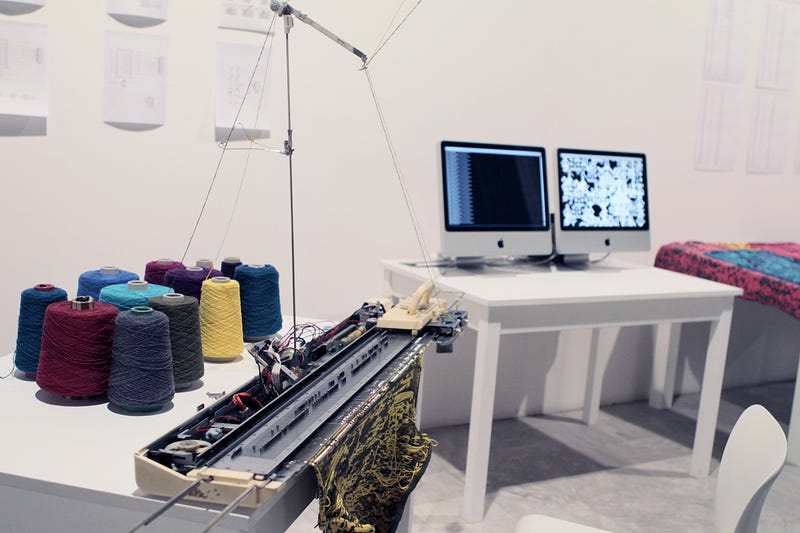
Recently, Varela’s research and practice has focused on loom-based weaving techniques such as the upright loom she became acquainted with during her visit to Amazigh womens’ communities in Morocco. Rather than being anachronistic, this choice arises from a desire to enable continuity and connection with current-day conditions, as well as re-use of the medium outside of its usual context. In traditional contexts, the need to give shape to a certain condition is often depicted in a way that is symbolically associated with reality, just as the symbol “X” represents fertility, and a woman’s open body, in the Amazigh vocabulary. In the case of Maria Varela’s work, the shape usually originates in a constantly updated database, which evolves in ways that are deliberately beyond her control. On a piece of paper on her studio desk, the artist has drawn a grid whose squares correspond to each day of the year. She then fills each square with a color resulting from a personal assessment of the day based on predetermined social criteria such as mood, work, and health, eventually transforming its final pattern into a hand woven textile. This process, which appears to be the artist’s personal ritual, creates an atypical database revealing her need to give shape to time. Contained within this exercise is a desire to discover the shape which a certain circumstance can take without the artist’s complete aesthetic intervention, as well the desire to comprehend it in a more visual but also tactile way. The grid refers to the loom’s frame, on which the final “narrative” is woven, just like the digital square — the pixel — which is both information and a part of a larger image. For Varela, the internet constitutes an unregulated collective archive which she processes with an open data approach, perpetuating the interdependence of speech and image, as well as chance itself. In Songs of Mihyar the Damascene (FRMK #7, 2016), for example, she uses images she finds on the internet after entering words from the poems in the eponymous poetry collection by the Syrian poet Ali Ahmed Saïd (Adonis) in search engines for open data digital repositories.
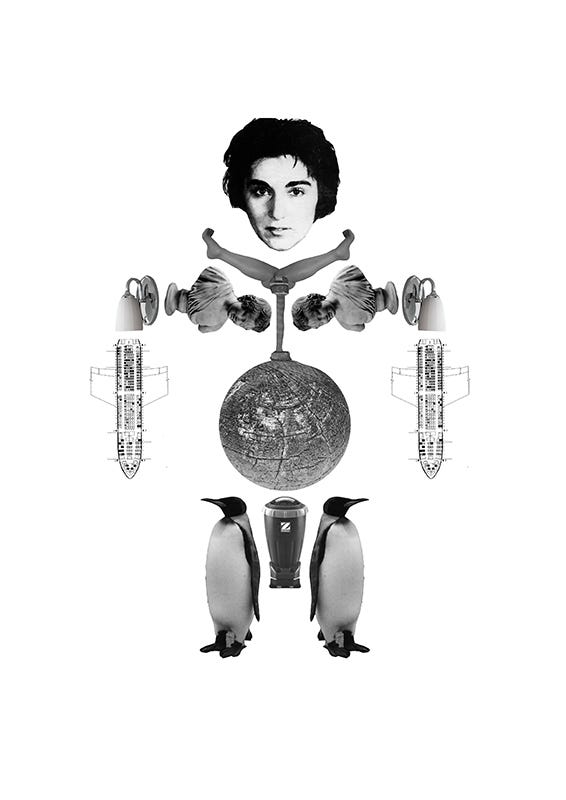
At the same time, while studying this communal way of living and working, Varela integrates it into the process of defining a contemporary artistic identity. Traditionally, the performative character of the collective weaving process is a form of socialization around which more or less formal rituals develop — stories, songs, gossip that are produced in parallel with the process of weaving, and are given equal value. This process also suggests a collaborative form of labor and economic production that the artist incorporates into her practise through collaborations and alternative economic models. Faced with the reality of the arts scene in Athens where she found herself after her studies in London, Varela co-founded the self-financed platform Frown (along with Konstantina Vafeiadou, Angeliki Chatzi and Marianna Chrisofi) as a space for the exchange of knowledge centering primarily on the use of digital media and crafts in the creation of ephemeral collectives. By continuing to organize seminars and presentations even after the conclusion of the platform in 2014, she seeks to investigate our relationship with tradition and technology within a framework of self-education, with emphasis placed on the process itself.
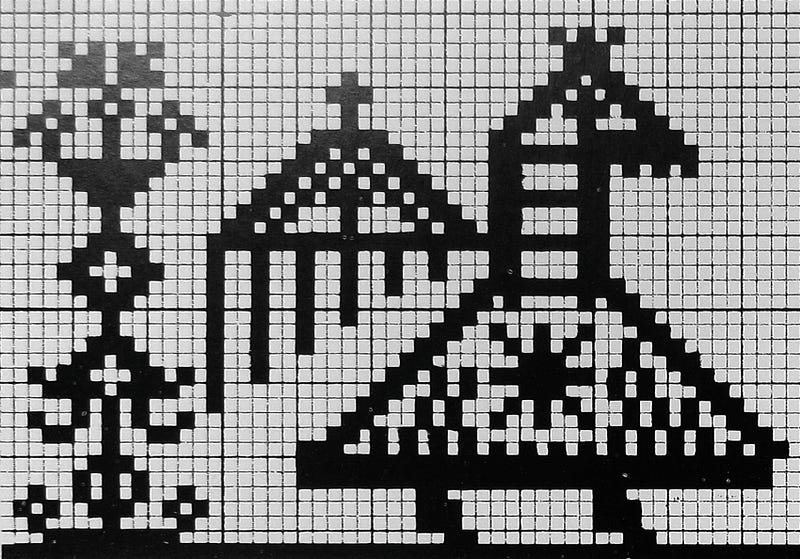
Working with human contact, and simultaneously with the impersonal nature of the internet, Varela addresses the present in order to regenerate it through her own experience, coming to terms with it through the invention of arbitrary rituals that express the pathologies of the contemporary individual. In her recent artworks, she seems to increasingly want to portray individual and collective experience as it unfolds, spinning the present as she remains both behind and in front of the camera, in the position of both director and his subject, inventing new tools on the spectrum between documentation and abstraction. As I ask her a series of questions about techniques I myself am unfamiliar with, I consider whether the process of transmitting a language through a dialectical process is perhaps more important than comprehending it. Is not artistic practice itself a dialect? And beyond decrypting its meaning, should we not simply enjoy the way it sounds, appreciating our interaction with its one and only speaker, even more?
Εssay by Eva Vaslamatzi about the work of Maria Varela
Text translated by Jacob Moe
Maria Varela (SNF ARTWORKS Visual Arts Fellow 2019) works as a media artist and workshop designer seeking to develop strategies of collective production.
Eva Vaslamatzi (SNF ARTWORKS Curatorial Fellow 2019) is an independent curator and writer currently based in Athens and Paris.



